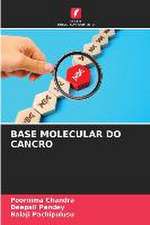Biomechanics in Dentistry: Evaluation of Different Surgical Approaches to Treat Atrophic Maxilla Patients: SpringerBriefs in Applied Sciences and Technology
Autor Muhammad Ikman Ishak, Mohammed Rafiq Abdul Kadiren Limba Engleză Paperback – sep 2012
Din seria SpringerBriefs in Applied Sciences and Technology
-
 Preț: 380.29 lei
Preț: 380.29 lei - 17%
 Preț: 360.34 lei
Preț: 360.34 lei - 20%
 Preț: 386.12 lei
Preț: 386.12 lei -
 Preț: 380.07 lei
Preț: 380.07 lei -
 Preț: 377.95 lei
Preț: 377.95 lei -
 Preț: 382.32 lei
Preț: 382.32 lei -
 Preț: 376.59 lei
Preț: 376.59 lei -
 Preț: 379.09 lei
Preț: 379.09 lei -
 Preț: 378.12 lei
Preț: 378.12 lei - 20%
 Preț: 293.83 lei
Preț: 293.83 lei -
 Preț: 344.90 lei
Preț: 344.90 lei -
 Preț: 321.36 lei
Preț: 321.36 lei -
 Preț: 264.79 lei
Preț: 264.79 lei -
 Preț: 344.90 lei
Preț: 344.90 lei -
 Preț: 356.46 lei
Preț: 356.46 lei -
 Preț: 382.95 lei
Preț: 382.95 lei -
 Preț: 355.66 lei
Preț: 355.66 lei -
 Preț: 479.67 lei
Preț: 479.67 lei -
 Preț: 415.18 lei
Preț: 415.18 lei -
 Preț: 444.52 lei
Preț: 444.52 lei - 20%
 Preț: 301.86 lei
Preț: 301.86 lei -
 Preț: 409.43 lei
Preț: 409.43 lei - 20%
 Preț: 322.17 lei
Preț: 322.17 lei -
 Preț: 355.49 lei
Preț: 355.49 lei - 15%
 Preț: 462.51 lei
Preț: 462.51 lei -
 Preț: 377.18 lei
Preț: 377.18 lei -
 Preț: 355.93 lei
Preț: 355.93 lei -
 Preț: 382.95 lei
Preț: 382.95 lei -
 Preț: 378.12 lei
Preț: 378.12 lei -
 Preț: 378.12 lei
Preț: 378.12 lei -
 Preț: 380.07 lei
Preț: 380.07 lei -
 Preț: 380.07 lei
Preț: 380.07 lei - 20%
 Preț: 326.28 lei
Preț: 326.28 lei -
 Preț: 312.68 lei
Preț: 312.68 lei -
 Preț: 356.43 lei
Preț: 356.43 lei -
 Preț: 412.30 lei
Preț: 412.30 lei - 20%
 Preț: 225.31 lei
Preț: 225.31 lei -
 Preț: 378.12 lei
Preț: 378.12 lei -
 Preț: 376.59 lei
Preț: 376.59 lei -
 Preț: 195.87 lei
Preț: 195.87 lei -
 Preț: 376.22 lei
Preț: 376.22 lei - 20%
 Preț: 324.64 lei
Preț: 324.64 lei - 20%
 Preț: 288.73 lei
Preț: 288.73 lei -
 Preț: 377.57 lei
Preț: 377.57 lei -
 Preț: 261.91 lei
Preț: 261.91 lei -
 Preț: 381.98 lei
Preț: 381.98 lei -
 Preț: 273.64 lei
Preț: 273.64 lei -
 Preț: 410.87 lei
Preț: 410.87 lei -
 Preț: 379.68 lei
Preț: 379.68 lei -
 Preț: 374.30 lei
Preț: 374.30 lei
Preț: 358.48 lei
Preț vechi: 377.35 lei
-5% Nou
Puncte Express: 538
Preț estimativ în valută:
68.60€ • 74.49$ • 57.63£
68.60€ • 74.49$ • 57.63£
Carte tipărită la comandă
Livrare economică 23 aprilie-07 mai
Preluare comenzi: 021 569.72.76
Specificații
ISBN-13: 9783642326028
ISBN-10: 3642326021
Pagini: 100
Ilustrații: XIII, 91 p. 72 illus.
Dimensiuni: 155 x 235 x 20 mm
Greutate: 0.16 kg
Ediția:2013
Editura: Springer Berlin, Heidelberg
Colecția Springer
Seriile SpringerBriefs in Applied Sciences and Technology, SpringerBriefs in Computational Mechanics
Locul publicării:Berlin, Heidelberg, Germany
ISBN-10: 3642326021
Pagini: 100
Ilustrații: XIII, 91 p. 72 illus.
Dimensiuni: 155 x 235 x 20 mm
Greutate: 0.16 kg
Ediția:2013
Editura: Springer Berlin, Heidelberg
Colecția Springer
Seriile SpringerBriefs in Applied Sciences and Technology, SpringerBriefs in Computational Mechanics
Locul publicării:Berlin, Heidelberg, Germany
Public țintă
ResearchCuprins
Anatomical Considerations.- Treatment Options for Severely Atrophic Maxillae.- Biomechanical Considerations.- Finite Element Modelling.- Bone and Prosthetic Component Responses in Various Occlusal Loading Locations.- Bone and Prosthetic Component Responses in Various Occlusal Loading Directions.
Textul de pe ultima copertă
This book shows computational finite element simulations to analyse the strength of implant anchorage for intrasinus and extramaxillary approaches under various occlusal loading locations and directions. Three-dimensional model of the craniofacial area surrounding the region of interest, soft tissue and framework are developed using computed tomography image datasets. The zygomatic and standard dental implants are modeled using a conventional computer-aided design software and placed at the appropriate location. Material properties are assigned appropriately for the cortical, cancellous bones and implants with Masseter forces applied at the zygomatic arch and occlusal loadings applied on the framework surface.
Caracteristici
Shows computational finite element simulations to analyse the strength of implant anchorage for intrasinus and extramaxillary approaches Includes supplementary material: sn.pub/extras

















